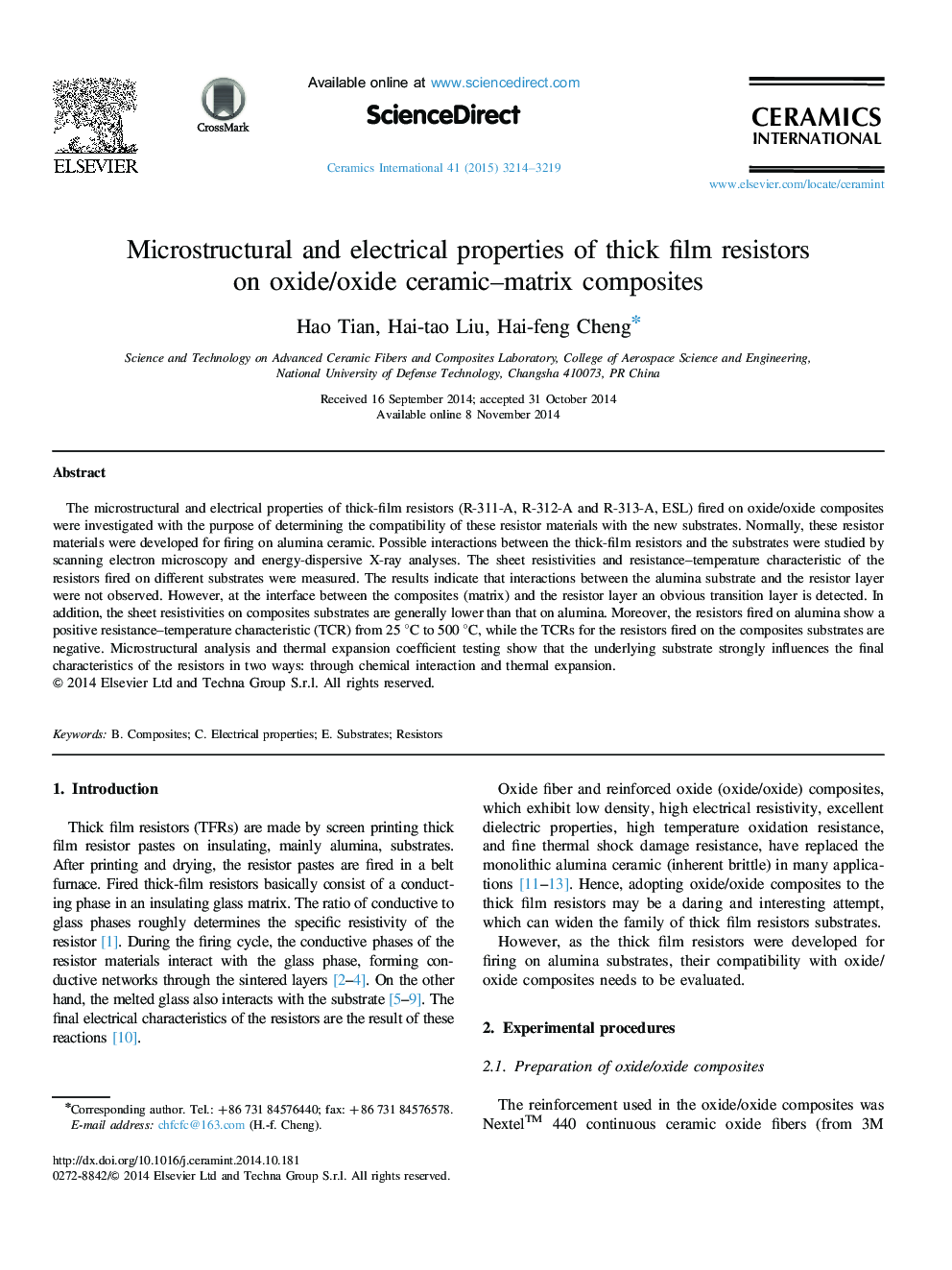| Article ID | Journal | Published Year | Pages | File Type |
|---|---|---|---|---|
| 1460650 | Ceramics International | 2015 | 6 Pages |
The microstructural and electrical properties of thick-film resistors (R-311-A, R-312-A and R-313-A, ESL) fired on oxide/oxide composites were investigated with the purpose of determining the compatibility of these resistor materials with the new substrates. Normally, these resistor materials were developed for firing on alumina ceramic. Possible interactions between the thick-film resistors and the substrates were studied by scanning electron microscopy and energy-dispersive X-ray analyses. The sheet resistivities and resistance–temperature characteristic of the resistors fired on different substrates were measured. The results indicate that interactions between the alumina substrate and the resistor layer were not observed. However, at the interface between the composites (matrix) and the resistor layer an obvious transition layer is detected. In addition, the sheet resistivities on composites substrates are generally lower than that on alumina. Moreover, the resistors fired on alumina show a positive resistance–temperature characteristic (TCR) from 25 °C to 500 °C, while the TCRs for the resistors fired on the composites substrates are negative. Microstructural analysis and thermal expansion coefficient testing show that the underlying substrate strongly influences the final characteristics of the resistors in two ways: through chemical interaction and thermal expansion.
